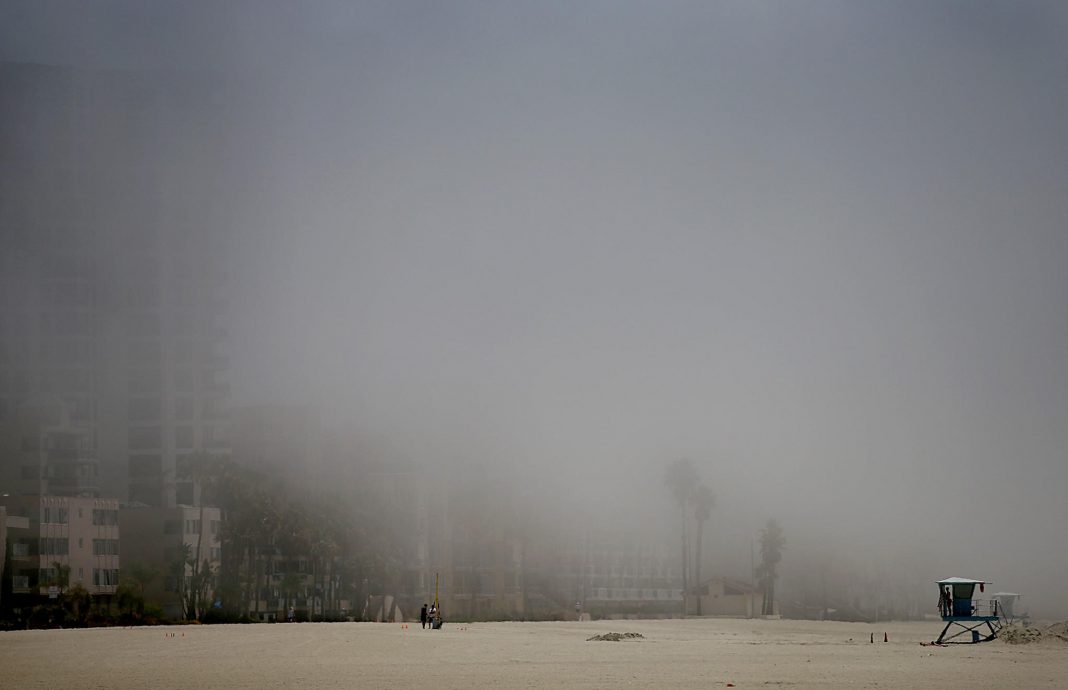A new study from NASA finally breaks down the intricacies of meteorological conditions that cause full sized rain drops versus a measly drizzle.
In order to fully understand what’s being investigated, let’s first break down the different measurements of the droplets that make up clouds and rain. Clouds form as a collection of water vapor building on an aerosol particle. They continue to build and grow until they make droplets of different sizes. The particle at the center of the cloud called a cloud condensation nucleus is 0.0002mm, which is 1000 times larger than a water molecule. The water vapor that forms around the cloud condensation nucleus, known as cloud droplets are .02mm and are not heavy enough to fall. That happens when the droplet hits drizzle size at .5mm. And finally, a full sized raindrop is 2mm.
What scientist have long struggled to understand is what causes the drizzle to be more common over oceans than over land where conventional wisdom has said that the greater amount of aerosol particles should cause more drizzle there instead. If the scientist could explain, it would help certain weather modeling and future climate predictions.
Although it was previously believed that a greater number of aerosol particles would increase the chance of drizzle, research from NASA’s Jet Propulsion Laboratory, the University of Tokyo, and UCLA, suggests that it is instead updrafts that determine the difference in drop size.
Updrafts are warmed columns of air that rise from the Earth. In thunderclouds these strong winds cause the drizzle sized droplets to tumble around in the cloud gathering more water until they are too heavy stay aloft on the air, causing it to warm. However, scientists were not sure what effect updrafts had on low-lying clouds.
Hanni Takahashi, the research team leader at JPL and UCLA Joint Institute for Regional Earth System Science and Engineering decided to take a closer look at updrafts and their role in a drizzle. She said, “There was a previous hypothesis that had updrafts could be important. But the hypothesis had never been tested, and I wasn’t sure if updrafts were strong enough to affect the size of rain droplets.”
By analyzing data from various sources including NASA’s Aqua and CloudSat satellites, Takahashi and her team found that even though the updrafts were weaker over land, they were strong enough to keep drizzle sized drops from falling to Earth before reaching raindrop size. Over the sea, however, updrafts are even weaker and can keep drizzle drops aloft, allowing the drizzle to fall more often on oceans than it does on land.
Hopefully, these findings, available online from Quarterly Journal of the Royal Meteorological Society, can aid another scientist with weather forecasts and modeling climates of the future. The sooner currents models are updated with the results of the updraft study; the more realistic and less drizzly, the models of future temperatures and climates will be.
More News to Read
- Martian Moon Phobos Makes Guest Appearance in Hubble Photos of Mars
- Accidental Discovery of new Method for Creating High-Energy Shockwaves that Accelerate Astrophysical Particles
- Mathematical Algorithms Reveal New Information About Aggressive Breast Cancer
- New AI Finds Recipes Using only Pics of Food
- Does General Relativity Need Dark Energy?











